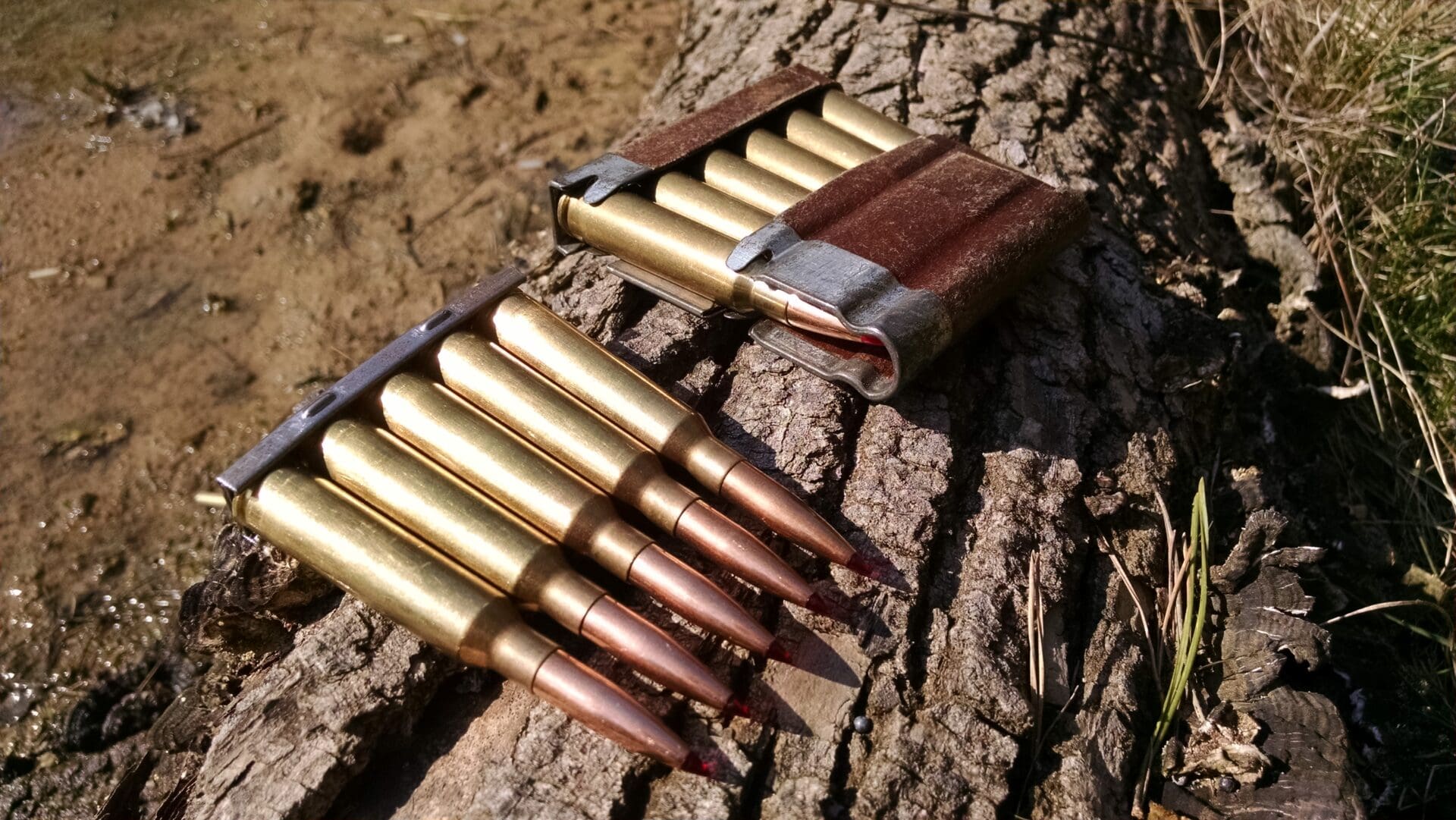
(Find Part 1 and Part 2 in the series at these links.)
By now you should have your CMP rifle in hand. A question I’m often asked is whether or not a shooter should use factory, surplus, or hand loaded ammunition for this sport. There are several opinions on this and each is valid. In short, each has different advantages and various shortcomings . . .
SURPLUS AMMUNITION
Despite reports to the contrary, the days of super-cheap surplus ammunition are still here. You just need to know where to look and have realistic expectations on cost and quality. I always hear some guy at the range talking about how he used to get .303 British at five pennies a round and how he wishes those days were still upon us. Yes, .303 may be expensive today, but not because it’s any better than it once was. The supply dried up with the good surplus rifles.
With a shrinking British Empir, the post-WWII world was awash in surplus Enfields. The .303 was as common then as the 7.62x39mm is now. It doesn’t take much searching to find 7.62 for 20 cents a round. By comparison to today, the median family income in the golden age of surplus was about $6,000 annually. If you do some figurin’, one dollar in our current world was worth about eight in 1960’s America. So if you took the mythical ‘five cents’ and put it into today’s dollars, it would be about 40 cents a round now, which is cheaper than factory new stuff, but on par with cheap surplus.
Our current purchasing power enables us to shoot for about the same or less as the old guys did in days of yore. So you can do the same damage today for the equivalent percentage of your income. Our 40 cent surplus 7.62x54R is the same to us as .303 British nickel surplus was back in the 1960s. If you buy 7.62×39 at 20 cents a pop, you’re actually shooting for about half what that old timer said he could shoot for.
Good practice can come with volume shooting, and that’s what surplus ammunition is good for. But while it’s inexpensive, it isn’t typically very accurate. Some will debate me on this, but I won’t budge on my assertion. A novice shooter will suffer frustration shooting a low-quality rifle with cheap ammo. Gear makes a huge difference in this game and you will be at a severe disadvantage firing surplus.
Another glaring issue with surplus is the whole corrosion issue. Many old rounds are corrosive and will cause pitting and rust if left dirty after shooting. I don’t like this stuff because cleaning a match rifle isn’t something you want to do very often. My .308 hasn’t had the barrel cleaned since 2013 and it shoots .25MOA 24/7/365. That rifle has seen a minimum of 3000 rounds a year for nearly ten years and I see no reason why a gun that’s shot a lot has to be cleaned. My M96 has seen well over 2000 rounds since I bought it last year and it is shooting better now than ever.
Cleaning is the most destructive time for a gun and I shudder at the thought of running anything down my barrel besides bullets. It just isn’t necessary. The extra cleaning will harm your shooting and degrade the internal surfaces of your barrel. Leave all that copper. Disregard that little bit of carbon. If you’re firing your rifle as much as you should for practice, there won’t be any time for modern ammunition to corrode it. A clean barrel is an inaccurate barrel. You don’t want to have to spend time and money building up a bearing surface every time you go to the range. It is not worth your time.
‘But Josh, the guns were meant to fire that old ammo! They are at their most pure with surplus ammo!’ Sorry, but you’re wrong. This is a game and we play to win. Tiger doesn’t play with wooden clubs and Gordon doesn’t put Henry Ford’s leaded gas in his car. If you want to get in a uniform and shoot corrosive ball from your Mosin, you can. Just don’t expect to win anything. You’ll be competing against people like me and I don’t play to lose. Which brings us to . . .
FACTORY AMMUNITION
There is a good amount of high-quality factory ammunition out there in military calibers. Right off the bat, you must be careful with .30-06, especially in the M1 Garand. These rifles can’t handle the stress and pressure of modern hunting ammunition and should never fire bullets that weigh more than 175 grains. You can fire them in the weapon, but you risk literally destroying it. No joke. I’ve personally seen what en bloc after en bloc of 180gr Federal Fusion does to an M1. It isn’t pretty.
‘Hey! That is not true! I know a guy who shoots his M1 and stuff with high pressure factory loads and he’s totally fine!’ Sorry, but he’s an idiot. It will catch up with him, but likely not before he dies doing something else like texting ‘YOLO’ while driving or trying to deflect arrows with a samurai sword. Point is, don’t risk it. These are old guns and you can quite literally die if you subject them to pressures that they can’t handle.
The pressures generated by modern .30-06 can damage or destroy 1903 rifles as well. Some WWI-era rifles may have issues with the strength of the receiver and can be blown up or cracked by modern factory loads. I’ve never personally seen this happen, but just don’t risk it.
That said, there are plenty of excellent factory options available, but most aren’t match-quality ammunition. Hornady makes a small variety of match cartridges for CMP shooting and they’re generally very good. The Hornady 168gr AMAX loaded to Garand pressures was the CMP’s issue ammo at Camp Perry for several years and did much to improve scores across the board. There isn’t a better choice for factory match ammunition than Hornady. The current Vintage Match offerings include .30-06, .303 British, 6.5x55mm, and 8x57mm JS.
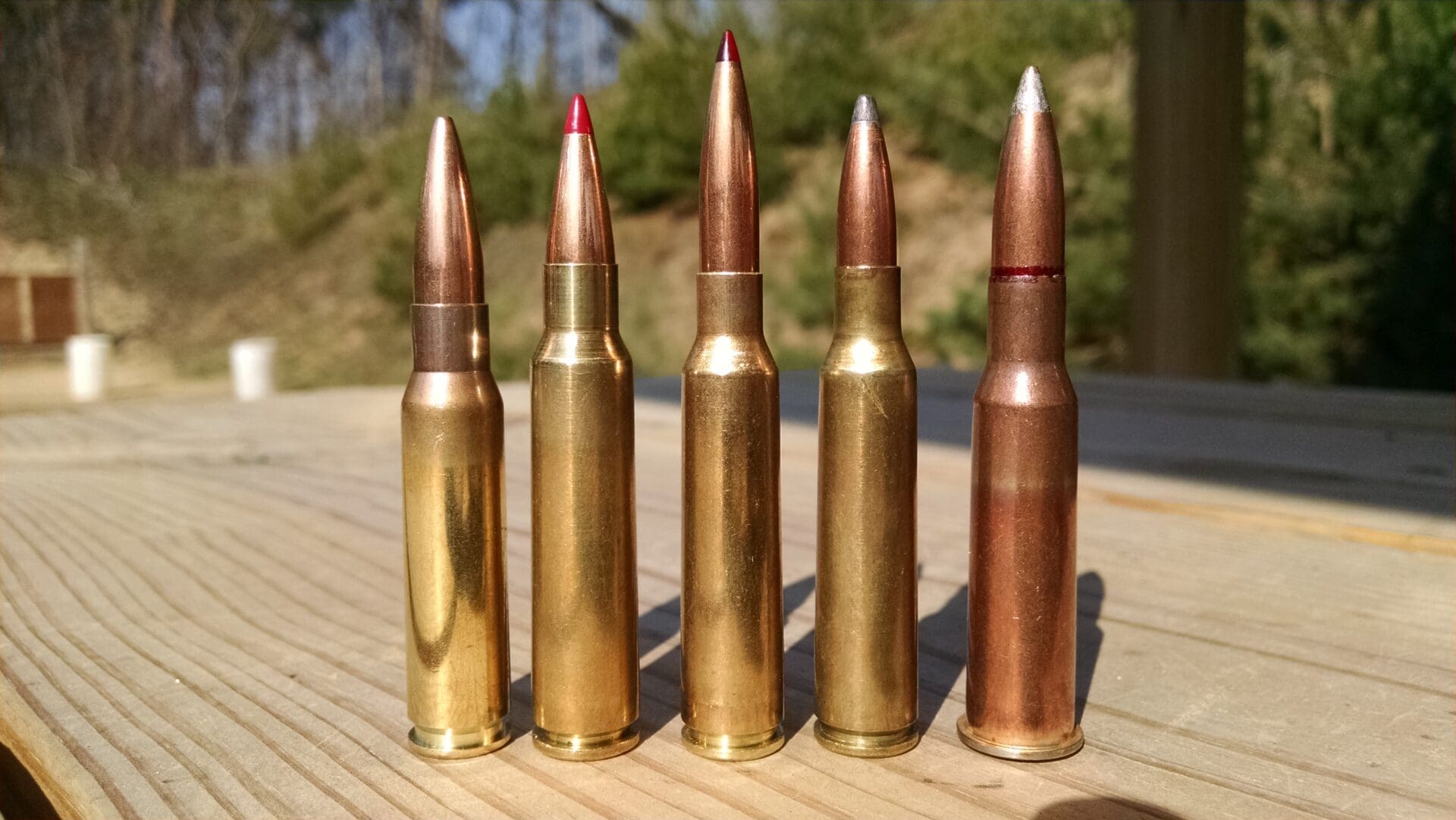
HANDLOADED AMMUNITION
Handloading is the way to go for CMP. It opens the door to a huge variety of choices and options and allows you to get the most performance out of your rifle.
I handload thousands of rounds a year for my rifles and there is a significant cost savings over factory and surplus. Wait…cost savings over surplus? Yes, you heard me right. Believe it or not, you can fire match-grade handloads for the same cost as most surplus, which is about 40 cents a round.
Reloading takes time, which not everyone has. That’s a down side, but it isn’t as time-consuming as you would think. I do 200-round batches of rifle and it takes me about four hours total from start to finish. This isn’t just junk, either. I’m talking match-grade stuff here.
When it comes to reloading, you will need to pay careful attention to what your rifle likes and doesn’t like as far as bullet weight and powder charge. You can load right from the manual and probably do just fine, but why stop there? I found that my Swedish Mauser is capable of remarkable accuracy when 140gr bullets are loaded long and the brass trimmed shorter than standard length. This took time to figure out, but it was 100% worth it to play around and find out.
Powder is a rather simple factor in this whole topic. There are three great powders that I recommend, but there are many other fine products available that will suffice. I load Varget in all my rifle cartridges. I use 43 grains in my .308, 41 grains in my 7.5x55mm, and 35 grains in my 6.5x55mm. Other good powders include H4895, IMR4895, H4350, and Benchmark.
If I’m shooting past 600 yards with my .308, I meter and weigh each individual charge. Not so with CMP cartridges. Since we’re shooting at only 200 yards, I just throw the charge from my measure and visually inspect lots of 100 to make sure all appear equal. There really isn’t a big enough difference inside 200 yards to spend the time weighing each.
As far as primers go, I use CCI #200 Large Rifle primers in all my rifle rounds. The CCI primers are very uniform and I’ve never had an issue with them. I don’t use benchrest primers because I see no reason inside of 200 yards. There isn’t a big enough difference to be made in my eyes.
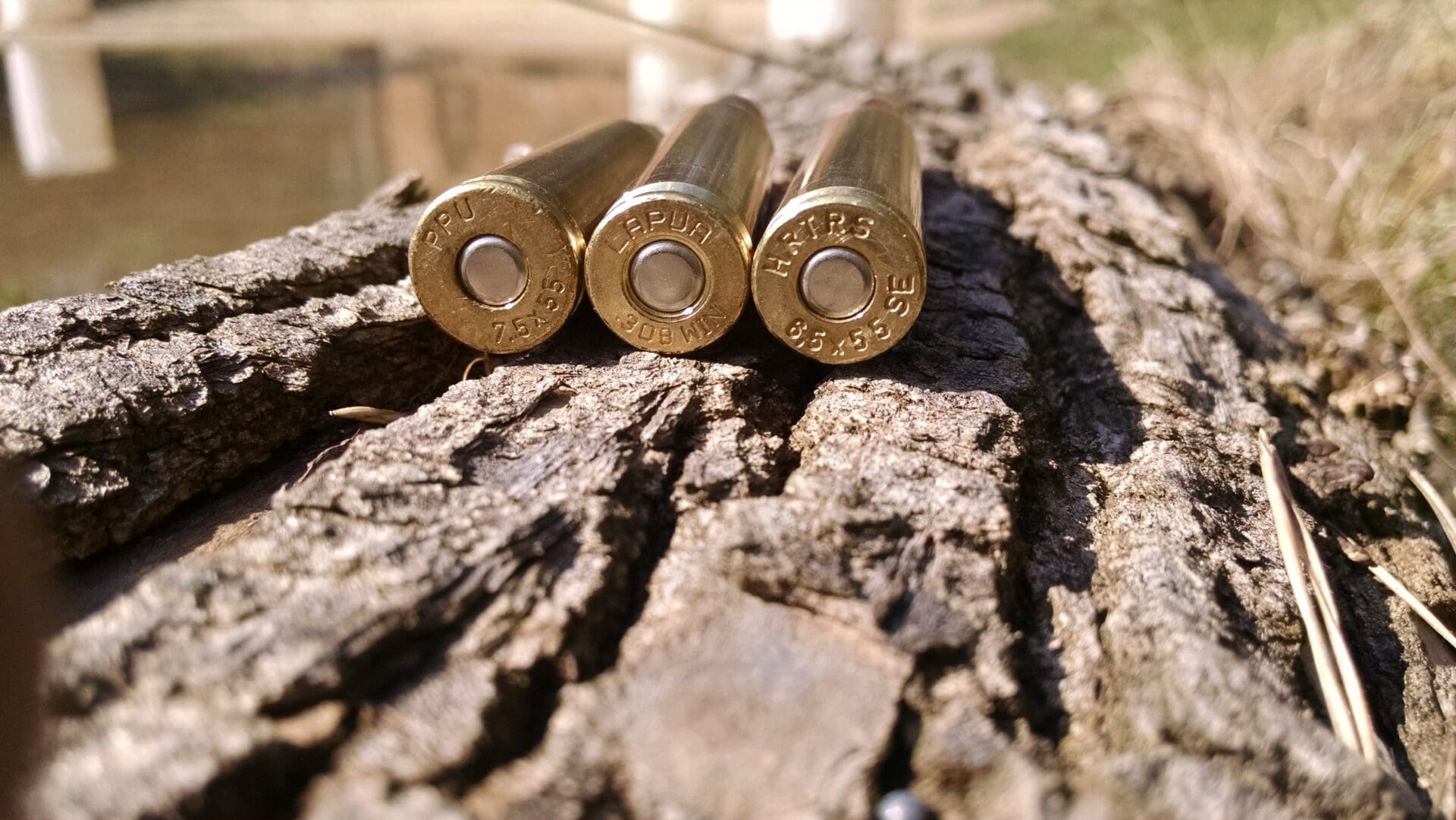
For my brass, I full-length resize all the rounds every time. Even though I neck size my .308 brass for long range competition and agree it makes more accurate rounds overall, I full-length size for CMP because of the kind of shooting it is. You will be required to rapidly fire the rifle and reload it at one point in the match and cases can get stuck. I’ve seen more than one guy chasing that 10-ring, only to have his rifle choke on brass that won’t extract reliably.
Extraction is half the battle. Loading the rifle is the other half. Don’t load your bullets too long to fit in the mag or be loaded rapidly off of a stripper clip.
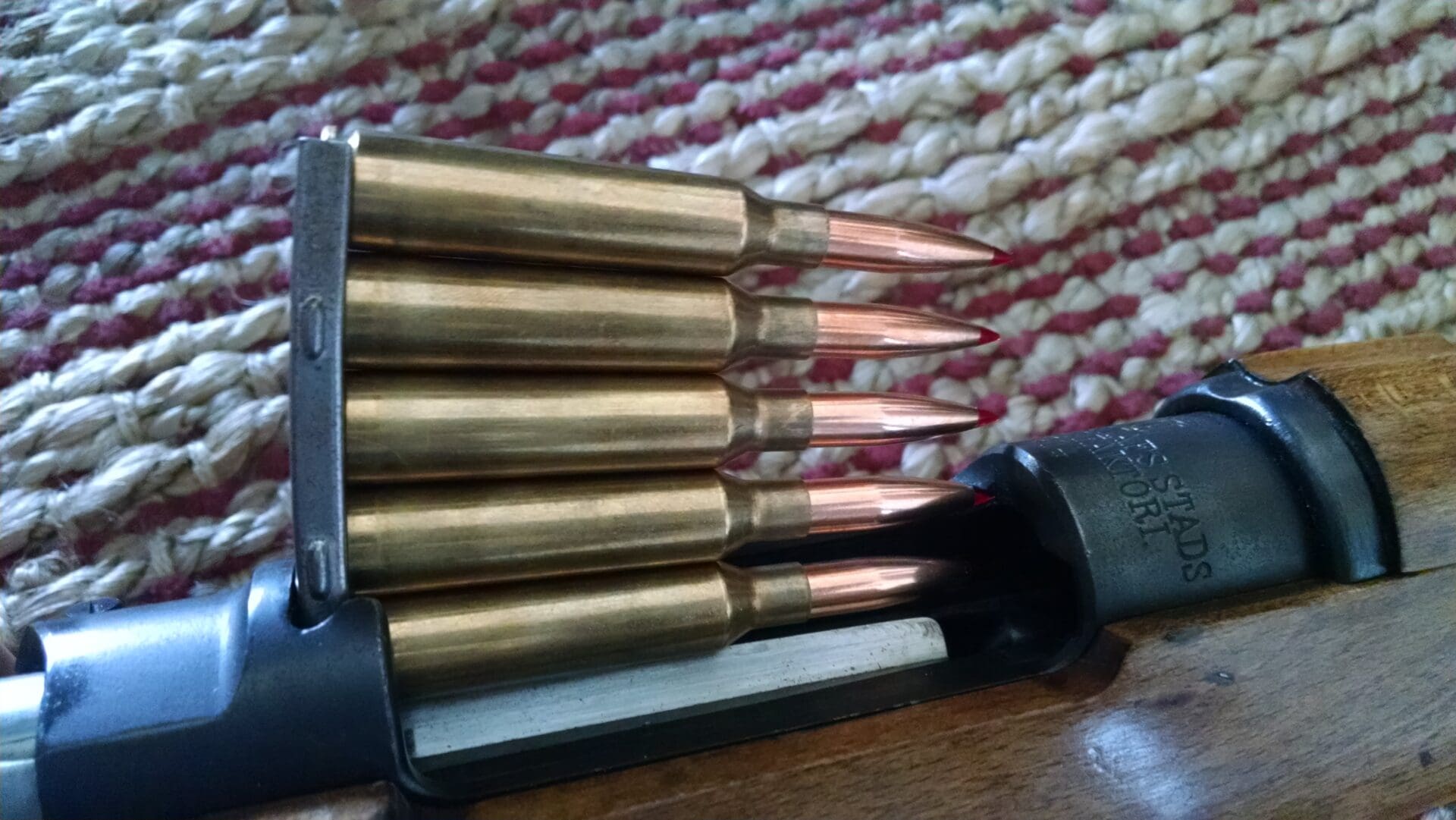
Many old bolt guns feed like modern semi-auto rifles. The K31 is a straight-pull rifle and it absolutely needs full-length sized brass, often with polished necks and shoulders. There isn’t much leverage in a K31 action, and a stuck case can ruin your match.
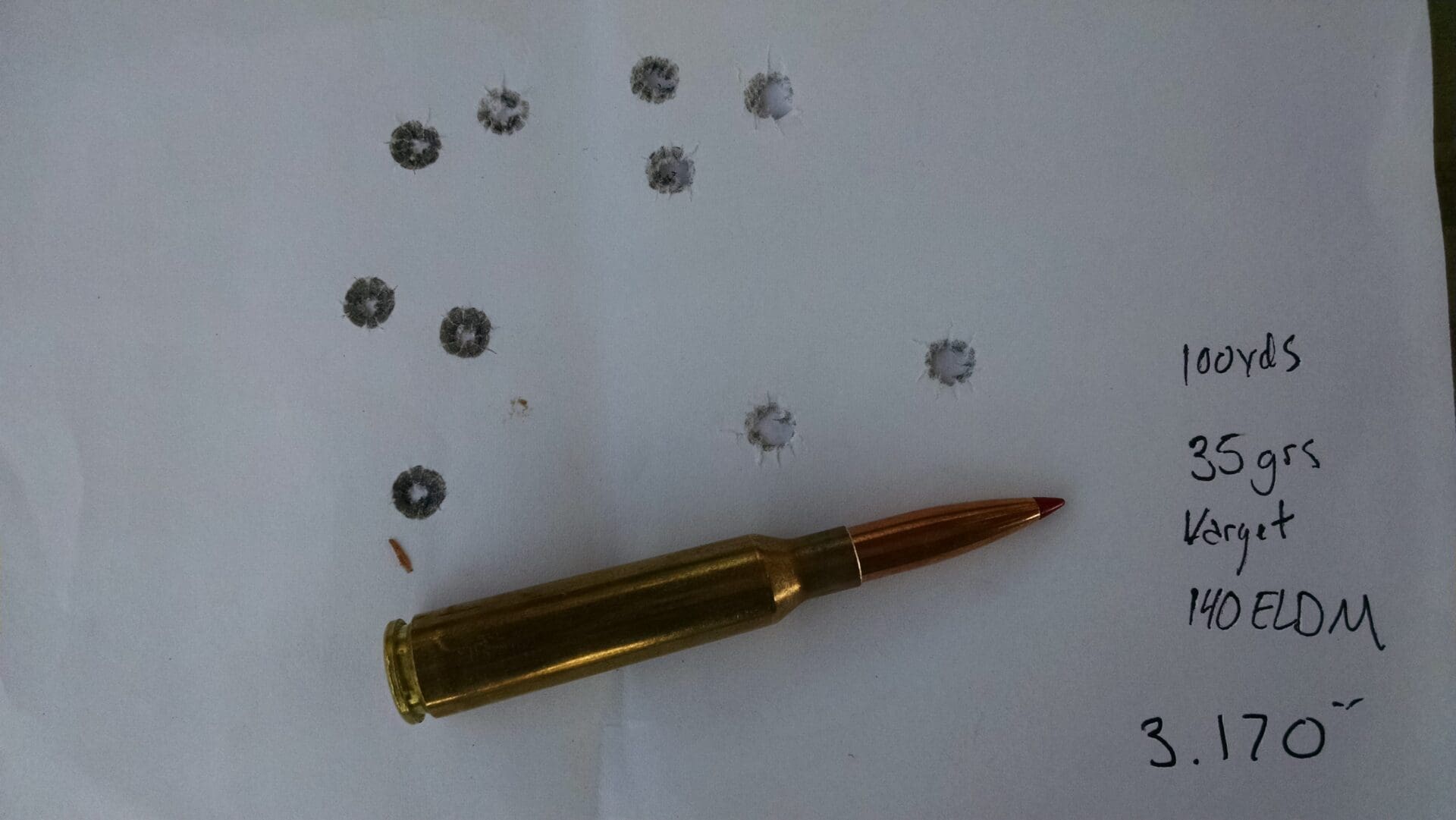
For M1 rifles, you’ll want to be careful of bent or damaged case rims. The M1 can be very rough on soft modern brass and you will want to check each case by hand for deformations. Reloading for the M1 requires skill and patience. The M1 rifle is not a very accurate design and tends to be finicky about powder and bullet seating depth. Also, make sure you are loading to M1-specific pressures. You can damage a rifle very easily using a full-power hunting load.
For bullets I exclusively use Hornady. Why? Hornady has been very involved with the CMP for many years and their products always reflect that. The new ELD Match bullets are perhaps the very best available today for CMP shooting and are a valuable asset for the reloader.
Hornady also makes a variety of match-quality bullets that work well even in obscure calibers. They make both .264 and .267 6.5-class bullets. Yes, the .267 is for the Carcano family of rifles. Most military rifles of years past were .30 caliber, and Hornady has you covered with .308, .310, .3105, and .312 diameter projectiles to suit your particular rifle best.
FINAL THOUGHTS
There’s a great deal to think about when it comes to picking the right ammunition for your CMP rifle. My advice is to pick the most accurate load you can acquire the most readily, be it reloading or buying factory.
Ideally, your rifle will group somewhere in the ballpark of three inches at 100 yards. Don’t worry about where that group is just yet. We’ll cover that in the next article. When you find that accurate load, just stop. Don’t waste any more time looking. I arrived at my accurate 6.5x55mm load after dozens of tries and many different bullet and powder combinations. It took me only one trial load to find that my K31 shoots great with it and I never tested anything else afterwards. It all just depends and, much like the rifle itself, can be hit-or-miss.
On a final note: don’t feel the need to reproduce the ballistics of the old round that your rifle was issued with. We’re playing a game here and you don’t need to worry about guarding the Fatherland. Have fun finding your match load and next time we’ll work on getting your rifle zeroed up and ready for practice.




What are your thoughts on surplus GP11 ammo for the K31? Anecdotal consensus on the interwebs seems to be that it is “match grade” ammo, people win competitions with it, etc? At the moment its not much of a cost savings over factory loaded ammo (theres not a whole lot out there) but it seems to bounce around in price a bit as availability comes and goes.
I haven’t seen GP11 in my usual ammo places in 6 months. 🙁
When I bought my Garand, I was looking hard at the K31. The lack of GP11 anywhere was what led me to the go CMP.
GP11 is berdan primed, so maybe not as easy to reload as, say, PPU. I got some GP11 at Knob Creek a couple weeks ago for around $0.70/rd. “Match grade?” A lot of word-of-mouth sez so, but who knows for sure? It shoots as good as new PPU.
I love to reload for all my rifles.
It is just relaxing and a way to deal with my guns even when I’m not at the range.
Military surplus is not really easy to find here.
S&B is a good, cheap choice, but nevertheless, hand loading is a great pleasure and deserves the effort and time.
I usually buy some normal ammo, shoot it and keep the brass for reloading.
It is unbelievable how much rounds can differ with different loads, bullets or powders!
Nice game!
Haysus Maria, 25 adblocks on this page. 2 video popups still on my iPhone.
My PC is reporting 22 ads blocked and 14 tracking sites blocked. I guess the repeated promise of getting this resolved has been long forgotten. Where is the new site design that was going to fix all of this? Vaporware…
The problems in the 1903 receivers were limited to those under s/n 800,000 made at Springfield Armory, and those under s/n 286,506 made at Rock Island Arsenal.
Eventually, the Army changed over most all the receivers with suspect heat treatment.
Another contributing factor to these receiver failures was poor (brittle) brass case quality in those years.
Today, you probably face a higher likelihood of injury driving to a match than shooting properly loaded ammo with quality components in a WWI 1903 rifle.
If you’re shooting a 1903A3, which is a slightly more accurate rifle with a two-groove barrel, you’ll have no issues with modern ’06 ammo.
I emphatically agree on trying to not clean match barrels too often. I’ve seen more damage done to match (real match) barrels by enthusiastic cleaning brush application than by shooting. Try to use just patches and mops on match barrels, and avoid brushing, especially with harder brushes. Never run a reverse the direction of a brush while in the bore.
On reloading: If you’re shooting an accuracy game and you’re not reloading, you’re planning to lose. It’s that simple. Either you reload and avail yourself of the modern powders, primers and bullets, all of which are significantly better than ball surplus ammo, or you lose. I’ve seen factory rifles that shoot 2MOA become 1MOA rifles simply by going to a premium bullet choice with a better choice of powder. The above selection of Varget is an excellent starting point – Varget is the first of the low-SD powders, and it became quite famous on the firing lines for allowing shooters to develop loads that are more temperature stable, more consistent, cleaner burning, etc than most of the other powders out there.
My only beef against Varget is that when a panic buying spree gets started, everyone who knows anything about Varget is out there, cleaning out the supply chain of Varget as quickly as they can.
“My only beef against Varget is that when a panic buying spree gets started, everyone who knows anything about Varget is out there, cleaning out the supply chain of Varget as quickly as they can.”
I’m not sorry.
I’m not sorry either. It’s hard enough to find it around here. I pick it up whenever I find it. But I use IMR 4064 for my Garand. Varget for the other rifles.
Contrary to what this article states, it is safe to fire bullets heavier than 175gr in an M1. HOWEVER, one must have a powder with the proper burn rate to match the weight of the bullet. Modern hunting rounds, as mentioned, burn too slowly and create over pressure which will damage the rifle–just don’t use ’em.
American Rifleman (March 86) had a terrific article which highlights load recipes for the Garand, including heavier 180 and 190gr bullets:
http://freepdfhosting.com/42818235ca.pdf
Thanks for posting that link. I was going to address this, but I couldn’t remember where I had seen this issue addressed and I don’t have the time to write something on it this week.
The issue of over-pressure in gas-operated rifles is one that can be solved by choosing not only the load of powder, the bullet weight, but also the burn rate of the powder. This is yet another reason for people to learn how to reload.
One other thing: When reloading for semi-auto rifles, it is often wise to use a full-length resizing die. Just bumping the shoulder can result in problems feeding.
Good article. Thanks.
This is good info. I’m restoring a sporterized 03A3. Ive finished everything but mounting the rear sight and that will take a bit of welding as the previous owner filed part of the dove tail. I’ve thought about attending a CMP match with the 03A3 as it shoots well. With the Williams aftermarket sight and no peep (its missing) I shot 1×3″ group, 3×5″ groups and one terrible 7″ group at 100 yards with Greek HXP.
I have a Swedish M94, but I haven’t shot it yet as I am also restoring it from being sporterized. I’m hoping it shoots well also.
You’re doing God’s work restoring those sporters. 🙂
Thanks. Luckily the 03A3 just needed a new stock and hardware and the rear sight. There is enough dovetail left to hold the sight, but it will rock a little. I’ll had to add material and make a set screw to keep it in place.
The 1916 made Carl Gustafs M94 needed everything. Bubba cut down the stock and removed all metal except for the barrelled receiver, trigger, bolt and magazine. I luckily found a stock on ebay as they are not very common. The rest of the parts have taken me about a month to collect. The last bits arrived in the mail today. Without the internet, it would have been nearly impossible. I will have to learn how to solder the rear sight and front sight as the rear was removed, and the front sight tower was ground off. The last thing I need is a sling and it will be as restored as it will ever be. It did have a scope mounted and the bolt handle turned down more so I had to modify the stock slightly. I might throw the scope on there for accuracy tests.
Damn, that ELD 6.5 must fly straight as hell.
Comments are closed.